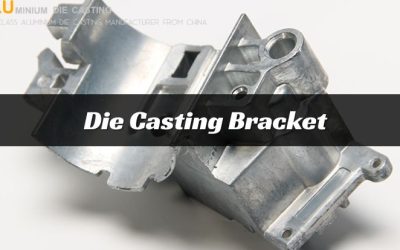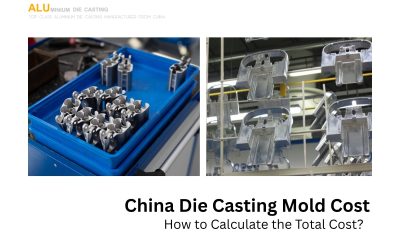The metal mold casting also called permanent mould casting, it is the liquid metal poured into the metal mold, for casting a casting method. Cast is to use metal, can use repeatedly many (hundreds of times to thousands of times).
Metal to casting and sand mold casting comparison: in technical and economic have many advantages.
(1) the production of metal mold casting, its mechanical properties than sand mold casting high. The same alloy, the tensile strength can be improved average about 25%, yield strength by an average of about 20%, its corrosion resistance and hardness also increased significantly;
(2) the casting precision and surface roughness than sand mold casting high, and quality and size stability;
(3) casting process yield high, liquid metal consumption reduce, general can save 15 ~ 30%;
(4) don’t sand or less with sand, general can save molding material 80 ~ 100%;
In addition, the metal mold casting production high efficiency; Make casting defect reasons reduced; Process is simple, easy to realize mechanization and automation. The metal mold casting although have many advantages, but there are also shortcomings. Such as:
(1) metal mold manufacturing cost high,
(2) metal type airtight, and no compromises sex, easy cause casting wash insufficiency, the cracking or iron casting defects such as the day,
(3) the metal mold casting, mold working temperature, alloy of pouring temperature and casting speed, casting in cast stay time in, and the coating, etc, to the influence on the quality of castings are sensitive, must be strictly controlled.
The metal mold casting now the production of casting, in weight and shape to have certain restriction, such as black metal can only be shape simple casting; The weight of the casting not too big, Wall thickness also has limitation, smaller casting wall thickness can’t cast out. Therefore, in order to decide the metal mold casting, must be comprehensive consideration of the following factors: casting shape and weight size must be appropriate; Want to have enough batch; Completion of the production tasks period license.
The metal mold casting forming process characteristics
Metal type and sand mould, the performance have significant difference, such as sand have permeability, and metal type are not; The thermal conductivity of the sand is poor, metal type thermal conductivity is very good, sand have compromises sex, and metal type no, etc. Metal type of these characteristics decided it in casting forming process has its own rule.
Cavity in gas state change on casting molding influence: metal in filling, cavity within the gas must be quickly discharge, but metal and have no air permeability, as long as the process a little bit negligence, can give the quality of casting bring bad influence.
In the process of casting solidification heat transfer features: metal liquid once into the cavity, the quantity of heat to the metal mold wall. Liquid metal through the type wall heat loss, solidification and produce contraction, and type wall in the heat, elevated temperature at the same time produce inflation, results in casting and type wall formed between the “gap”. In the “casting a clearance a metal type” system does not reach the same temperature before, can put the casting as in the “gap” in cooling, and metal mold wall is through the “gap” is heating.
Metal type hinder contraction of the influence of the casting, metal type or metal core, in casting solidification Cuo armor had no compromises sex, block casting shrinkage, this is its another characteristic.
The metal mold casting process
1 metal to preheating
Not preheating metal type cannot undertake pouring. This is because the metal type thermal conductivity/liquid metal cooling decisions, liquidity severe lower, easy to make casting appear cold shut, misrun inclusion, stoma defect. Not preheating metal mold in the casting, casting, will be strong heat strike, stress multiplication, make its extremely easy damage. Therefore, metal mold in before you start work, should first preheating, the suitable preheating temperature (namely working temperature), along with the alloy species, casting structure and size and decide, usually by test to determine. Usually, metal type preheating temperature not below 1500 c.
Metal type preheating method is:
(1) with torch or gas flame preheating; (2) using resistance heater; (3) the oven heating, its advantage is temperature uniformity, but only applies to small metal type; (4) to metal mold in the furnace baking, and then pouring liquid metal to metal type hot hot. This method, only applies to small cast, because it will waste some liquid metal, also can reduce the mold life.
2 the metal mold casting
Metal type pouring temperature, general than sand mold casting high. But according to alloy type, such as chemical composition, casting size and thickness, and through the test to determine. The data in the table below for reference.
All kinds of alloy pouring temperature
Alloy type pouring temperature ℃ alloy type pouring temperature ℃
Aluminum tin alloy 350 ~ 450 brass 900 ~ 950
Zinc alloy 450 ~ 480 bronze 1100 ~ 1150
Aluminium alloy 680 ~ 740 aluminum bronze 1150 ~ 1300
Magnesium alloy 715 ~ 740 cast iron 1300 ~ 1370
As a result of the metal type of chilling and airtight, pouring speed should be done first slow,, quick, again slowly. In pouring process should try to ensure smooth flow.
3 casting out type and core-pulling time
If the metal core in casting stay time in the long, because casting contraction produce hold type core force is, the greater the therefore need core pulling force also more. Metal core in the mirror one in the most appropriate residence time, is when casting cooling to the plastic deformation temperature range, and has the enough strength, the core pulling is the best time. Casting in metal type for too long, type wall temperature, with more and more of the cooling time, also can reduce the metal mold productivity.
The most suitable drawing core and casting out type time, generally with the test method to determine.
4 metal mold working temperature regulation
To ensure the metal mold casting quality is stable, the production of normal, first of all to make metal mold in the production process of constant temperature changes. So each pouring a, it needs to metal type open, park a period of time, to be cold to a certain temperature and water. If rely on natural cooling, need time is long, will reduce productivity, so commonly used forced cooling method. Cooling mode usually have the following kinds:
(1) air-cooled: namely in the metal mold peripheral cooling, strengthen the convection radiator. Air cooling mode of metal type, although simple structure, easy manufacturing, low cost, but the cooling effect is not very ideal.
(2) the indirect water: in the metal type back or a local, cast in water jacket, the cooling effect than air-cooled good, suitable for casting copper pieces or malleable cast iron parts. But for casting thin wall castings or ductile iron casting, fierce cooling, will increase the defects of castings.
(3) direct water: in the metal type back or local directly make water jacket, in water set inside water for cooling, it is mainly used in casting steel parts or other alloy castings, cast requirements strong cooling parts. Because of its high cost, only suitable for mass production.




0 Comments